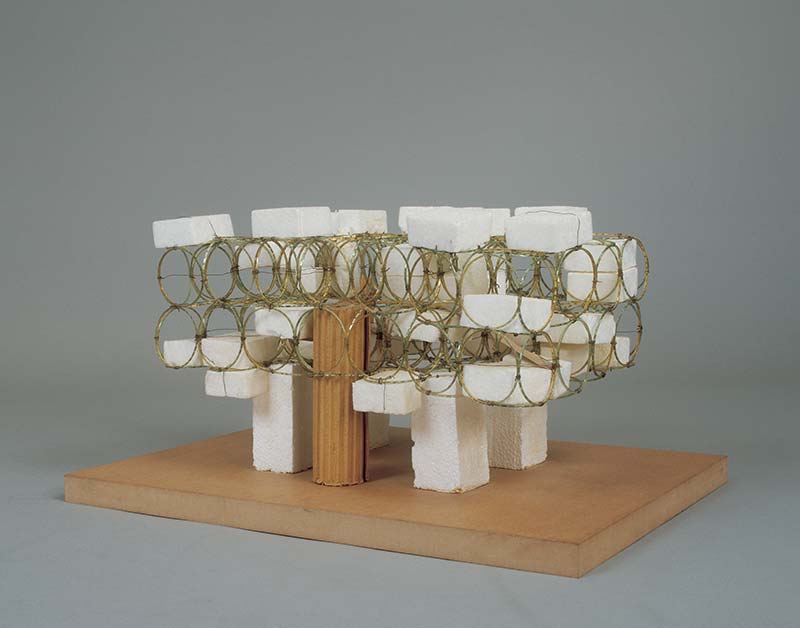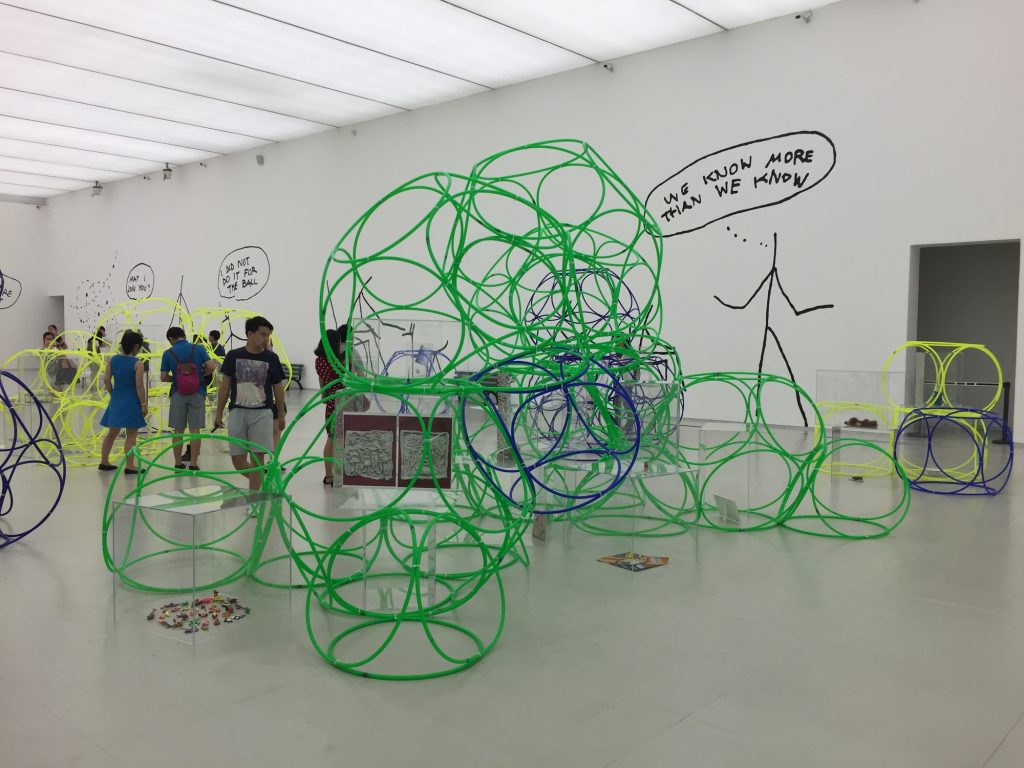Yona Friedman
Yona Friedman (born in 1923) is a Hungarian-born French architect.
He first studied architecture at the University of Technology and Economics in Budapest, then at the Technion of Haïfa, Israël, where he worked as an architect from 1949 to 1957. Since his early projects on housing, he tried to step away from the responsibility for designing the projects by delegating it to their future inhabitants, a procedure he calls “self-planning”. In 1953, in response to postwar demographic problems and the challenges of the reconstruction period, he started to conceive spatial structures on stilts based on “mobile architecture”‘s principles (1958): 1) to touch the ground in a minimum area; 2) to be demountable and movable; 3) to be transformable at will by inhabitants.
Plus
These structures with indeterminate characteristics enable him to develop the principles of the “spatial city”, a highly innovative urban organization based on a nomadic way of life. Yona Friedman says about the indeterminacy of his structures: “The building is mobile in the sense that any mode of use by the user or a group must be possible or practicable.”
At the International Congress of Modern Architecture (CIAM) in 1956, he questioned the postulates of modernist architecture, which led him to co-found the Mobile Architecture Study Group (GEAM), in 1958, and then in 1965 the International Group of Prospective Architecture (GIAP). Yona Friedman has achieved very few buildings, including the Bergson High School in Angers in 1979, a real “self-planning” experience developed together with the education staff; as well as the Museum of Simple Technology in Madras, India, in 1987, made from local materials such as bamboo.
Yona Friedman is also the author of numerous books (including comics and didactic books for Unesco), among them Realisable Utopias, a book in which he exposes his main lines of thinking and architectural production. His publications and teaching have had a notable influence on many architects from the seventies to the present day, especially those who have worked on projects of an experimental nature, such as Archigram, transforming together buildings and lifestyles related thereto.
But Yona Friedman has also been appreciated for many years in the field of contemporary art for the multitude of project drawings, all kind of representations in plan, in section or in elevation, but also for his models marked by special artistic touches (forms of intent, circulation, projection ratios, sculptural and volumetric qualities, etc.) and an aesthetic of remarkable mobility.
Works
“Human dreams of living the way he wants, but does not always know what he wants. Therefore, we must allow the building a great mobility of uses.”
Exhibitions at the Gallery
Larissa Fassler, Ground Control
23 jan. - 27 feb. 2021
Yona Friedman, Solo Show
Mar. 18 - April 15, 2017
Drawing by Numbers
January 27 – March 3, 2018
































